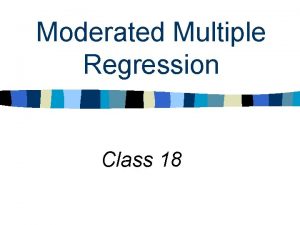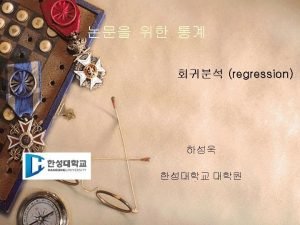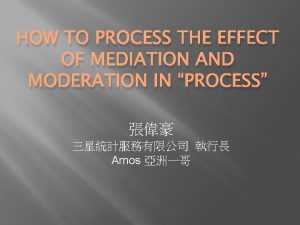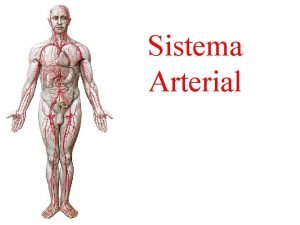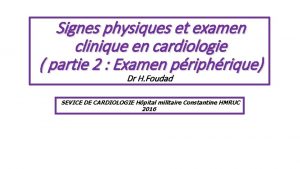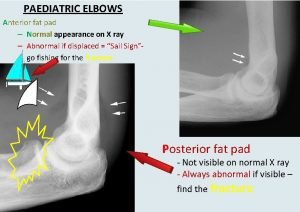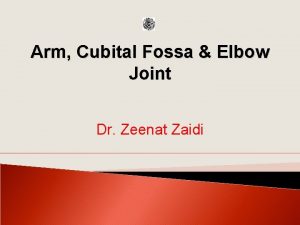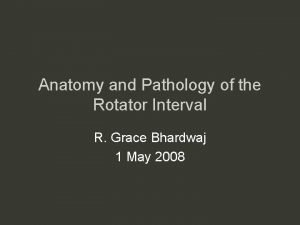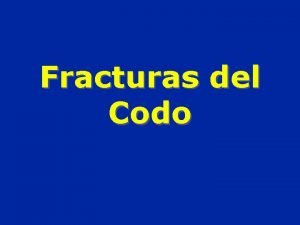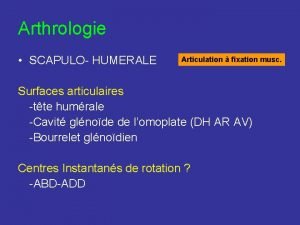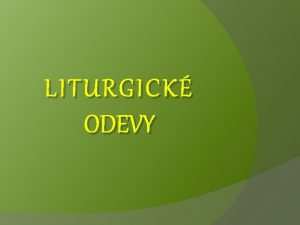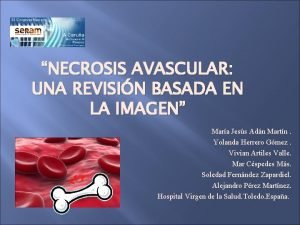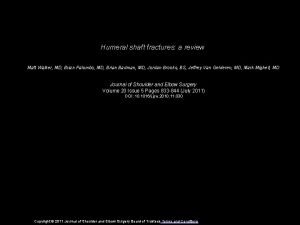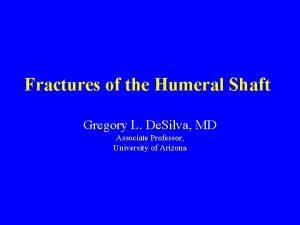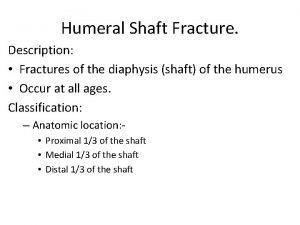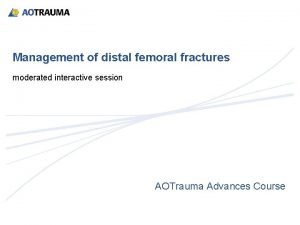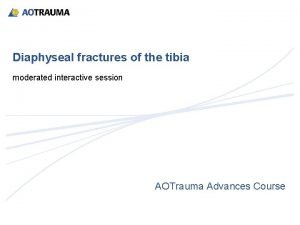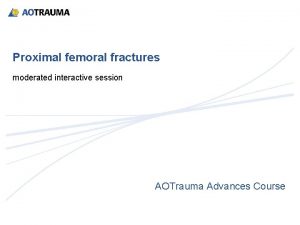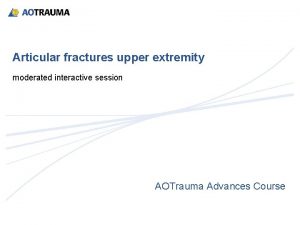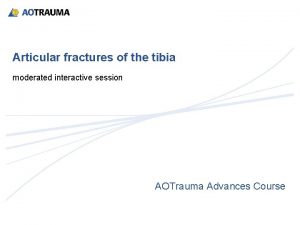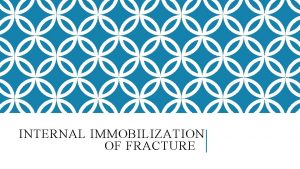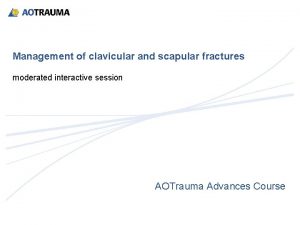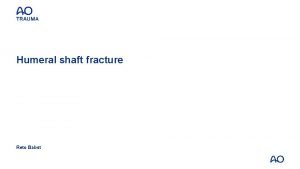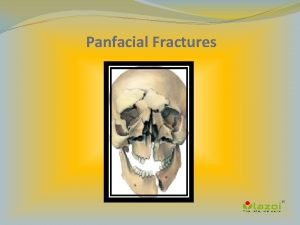Management of humeral shaft fractures moderated interactive session














- Slides: 14

Management of humeral shaft fractures moderated interactive session AOTrauma Advances Course

Learning outcomes • Determine indications for operative and nonoperative treatment of humeral shaft fractures, and which implants to use • Identify options for plating of segmental fractures • Anticipate problems and discuss possible solutions; eg, how to protect the radial nerve • Discuss radial nerve palsy and the role of exploration

What kind of treatment would you offer for this closed humeral shaft fracture? • Nonoperative • ORIF with a plate • Closed reduction and nailing • Closed reduction and external fixation nondominant arm

Key points from lectures Humeral shaft fractures (mid and distal shaft) • Increased indications for operative treatment • New plating techniques – Longer plates to resist rotational forces – Different surgical approaches according to fracture pattern and experience • Consider locked implants with bicortical screws for osteoporotic fractures • Beware of radial nerve risk

Key points from lectures Humeral shaft fractures plate and IM nailing fixation • According to some RCT plates perform better than nails • Nails are still indicated in pathological fractures, polytrauma, segmental fractures • There are new options for plating using MIPO techniques

14 -year-old male, collided with a tree while riding in a bicycle • Growth plates closing • Closed injury • Radial nerve is functioning

How do you proceed? - Manipulate and splint - Immediate plate - Immediate nail - Other

After closed reduction, radial nerve palsy

nerve compression

What should be done after ORIF? Radial nerve is nonfunctioning but reduction is stable. 1. Observation alone 2. EMG immediately 3. EMG at 4– 6 weeks 4. Other

30 -year-old male, car crash • ATLS protocol • Bilateral humeral fractures are only injury • Closed injuries • NV intact

What treatment would you offer? 1. Bilateral hanging arm casts 2. Bilateral IM nails 3. Bilateral plating 4. Bilateral fracture bracing 5. Plate dominant arm and IM nail nondominant arm

What would you do now? • Immediate nailing of both, postoperative NV status ok • Increased instability on left side (supplemental cables) postoperative x-rays of left arm postoperative x-rays of right arm

Summary • Nonoperative treatment is still the standard for most closed midshaft humeral fractures • If operative treatment is chosen there are several options: – Classic ORIF with plates – MIPO – Intramedullary nailing • Problems with the radial nerve—surgical and nonoperative care
 Mediator versus moderator
Mediator versus moderator Moderated multiple regression
Moderated multiple regression Moderated multiple regression
Moderated multiple regression Simple mediation model
Simple mediation model Interactive session poster
Interactive session poster Termination of brachial artery
Termination of brachial artery Arterias y venas del pie
Arterias y venas del pie Expansion systolique des jugulaires
Expansion systolique des jugulaires Fat pad elbow
Fat pad elbow Relations of elbow joint
Relations of elbow joint Triangular interval
Triangular interval Fractura de kocher
Fractura de kocher Lig coraco humeral
Lig coraco humeral Humerál
Humerál Clasificacion de ficat
Clasificacion de ficat

